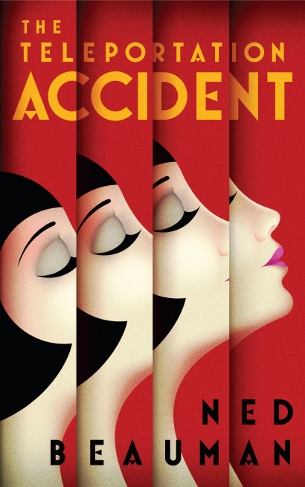Why you can trust GamesRadar+
“At university I was eager to publish some short stories and I found a list of print magazines that accepted unsolicited submissions and paid per word. There were not many of these, but one was a magazine called Cthulhu Sex , which only took stories that included ‘sex, tentacles, or, if possible, both.’ I started a horror story set at a girls’ boarding school…”
Ned Beauman was born to write weird. His first novel, Boxer, Beetle , about a collector of Nazi memorabilia with an illness that makes him smell like rotting fish, and a violent and misogynist Jewish boxer, attracted the kind of reviews usually reserved for Booker contenders. “Original, exhilarating and hugely enjoyable,” said The Sunday Times . The Observer thought it a “deftly plotted delight of a debut.” You know the kind of thing.
The Teleportation Accident begins by splitting its narrative between early ‘30s Berlin and late 17th century Paris (although ‘30s Paris and Los Angeles quickly take their turn). And it concerns Adriano Lavicini's Extraordinary Mechanism for the Almost Instantaneous Transport of Persons from Place to Place...
Lavicini being an ex-designer of weapons for the Venetian Arsenal, lately contracted to a Parisian theatre, where his teleportation device is to be used in the finale of Montand's new ballet The Lizard Prince, which will be attended by Louis XIV and his court. The theatre is the Theatre des Encornets, whose dictatorial director is Auguste de Gorge, who sleeps with an ever increasing number of whores, according to the Fibonacci sequence.
Buried under facts yet? Wondering if any of this information has any real purpose other than to add a complex level of verisimilitude? Ready for the entrance of ‘30s German beauty Adele Hitler (no relation), love interest of Egon Loeser, who’s about to pull the lever on his own teleportation device as the book opens?
The first forty pages are actually the most demanding, as we’re introduced to characters both important and unimportant; some real, some made-up, a few possibly real but in disguise, like the blond bisexual aspiring writer from London “hung like one of those Norse giants in the Ring Cycle”, who could be Christopher Isherwood of Goodbye To Berlin fame, but then again might not be.
At the centre, utterly oblivious to fascism’s rise and the dangers faced by his Jewish colleagues, is Egon Loeser - set designer, Berlin hipster and all-round jerk. In a city where everyone is having sex, Egon isn’t. Even ugly people who are hopeless at sex are having more sex than him. All he wants is to sleep with Adele Hitler, who has already slept with everybody else he knows. The injustice of her refusal haunts him, sends him careering from city to city in pursuit of her, and renders him insanely unpleasant to even the few friends he has. Anyone with any awareness would realise that this behaviour simply turns him into someone that no woman in her right mind would sleep with. Only Egon and self-awareness have never been introduced.
At times The Teleportation Accident is as bloody-mindedly difficult as Egon Loeser, but it builds slowly, brings its threads together with great skill, and Ned Beauman turns a good phrase as his characters dance their line between the cleverly obnoxious and the obnoxiously clever. His America has a Secretary of State who believes HP Lovecraft's Cthulhu stories are real, an industrialist can't tell the difference between pictures on posters and real life and tries to wrestle a paper gorilla to the ground to protected a printed heroine, and a mad professor who prefers his assistant not to have too many prejudices about reality. Not to mention teleportation, time travel and tentacles.
Jon Courtenay Grimwood
Read more of our book reviews .
SFX Magazine is the world's number one sci-fi, fantasy, and horror magazine published by Future PLC. Established in 1995, SFX Magazine prides itself on writing for its fans, welcoming geeks, collectors, and aficionados into its readership for over 25 years. Covering films, TV shows, books, comics, games, merch, and more, SFX Magazine is published every month. If you love it, chances are we do too and you'll find it in SFX.



